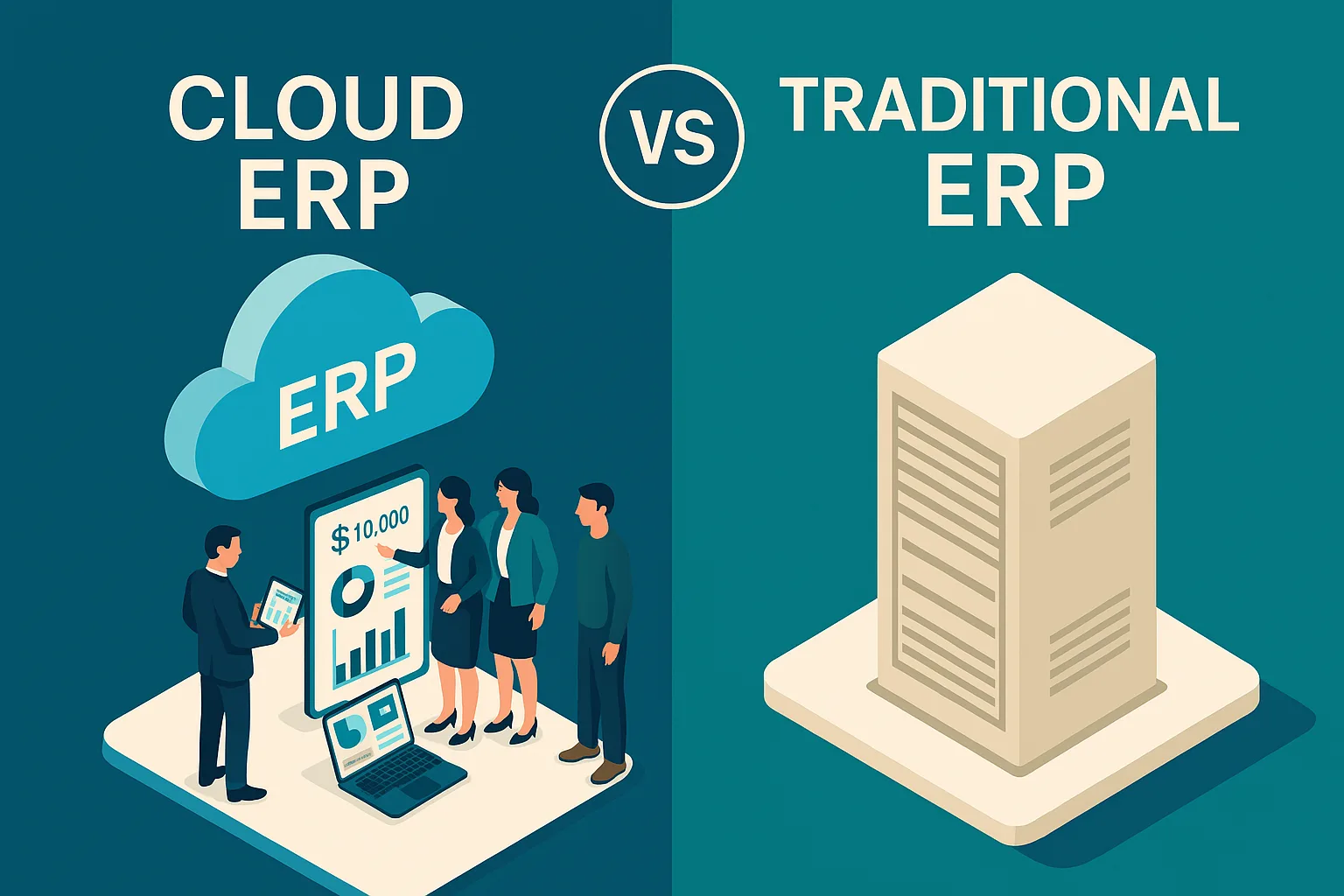Most companies either overpay for Sage Intacct or underutilize it—because they don’t fully understand its licensing model. This guide breaks down how to right-size licenses, save money, and grow strategically.

When businesses migrate from legacy systems to a modern ERP like Sage Intacct, the focus is often on technology, timelines, and team training. But behind every successful implementation lies a quietly critical component: data mapping.
This invisible backbone ensures that your historical financial data, vendor lists, customer accounts, and transaction histories are not only moved but made relevant and usable within your new ERP. Without meticulous data mapping, even the most advanced ERP system like Sage Intacct can underperform or create compliance risks.
In this article, we explore why data mapping is the “hidden hero” of ERP migration and how it shapes the success of every Sage Intacct rollout.
What is Data Mapping in ERP?
Data mapping refers to the process of identifying how data fields in your existing system correspond to fields in Sage Intacct. For example, a “Customer ID” in your legacy software might need to be aligned with “Customer Number” in Sage Intacct, but more importantly, its format, length, and value types must be compatible.
This process includes:
- Field-to-field matching
- Unit and currency conversions
- Date formatting consistency
- Data de-duplication
- Logic-based transformations (e.g., mapping multiple tax codes into a single Intacct-compliant rule)
Why is Data Mapping So Important in a Sage Intacct Implementation?
While ERP systems promise agility and transparency, poorly mapped data can cause:
- Incorrect reporting outputs
- Lost financial history
- Disconnected modules (e.g., AP not aligning with GL)
- Compliance and audit issues
- Frustrated users due to inaccurate dashboards
Given that Sage Intacct is a highly modular and dimension-based ERP, data must be structured to take full advantage of these features—otherwise, you’re simply replicating old inefficiencies in a new system.
Key Challenges Companies Face with Data Mapping
- Multiple Data Sources Many companies use different systems for payroll, CRM, inventory, and finance. Mapping all these into Sage Intacct, which has its own native structure, requires deep understanding of both systems.
- Poor Data Quality Old systems often allow “dirty” data—duplicate vendors, misspelled customer names, or inconsistent date entries. Mapping this as-is into Sage Intacct only transfers the problem.
- Custom Fields and Logic Homegrown ERPs or heavily customized systems often contain fields that do not directly map to Sage Intacct. These require rule-based transformation or the creation of custom fields within Intacct.
- Lack of Documentation Many legacy systems lack proper data dictionaries. Without documentation, your team must reverse-engineer what fields mean and how they were used before you can map them properly.
Best Practices for Accurate Data Mapping in Sage Intacct
1. Conduct a Detailed Data Audit
Before you map anything, assess your existing data. Classify the following:
- Master data (e.g., vendors, customers, items)
- Transactional data (e.g., invoices, journal entries)
- Historical vs. current data
- Custom vs. standard fields
Only then can you decide what to keep, clean, or discard.
2. Design a Field Mapping Matrix
A field mapping matrix lists every source field from your legacy system and matches it with its destination in Sage Intacct. Each row should indicate:
- Source field name
- Target field name
- Field type and length
- Transformation rules (if any)
- Notes on validation logic
This matrix becomes your roadmap for both developers and auditors.
3. Validate with Sample Data Early
Don’t wait until all data is cleaned and mapped to run tests. Use small, varied sample datasets to test how they import into Sage Intacct. This saves time and uncovers issues early.
4. Use Sage Intacct’s API for Automation
Manual mapping might be feasible for small systems, but large businesses need automation. Use Sage Intacct’s open API or tools like Data Delivery Services to script field-level transformations, ensuring consistency and speed.
5. Involve Functional Teams, Not Just IT
Your accounting, procurement, and HR teams should validate the mapped data formats. A field may appear correct technically but may not align with how the business needs to use it in reports, dashboards, or compliance filings.
How AccFin Helps with Data Mapping for Sage Intacct
At AccFin Outsourcing, our Sage Intacct migration methodology includes a dedicated Data Governance & Mapping phase that follows these pillars:
- In-depth analysis of the source system schema
- Mapping workshops with department heads
- AI-assisted data cleansing and pattern detection
- Visual documentation of all mapping logic for auditing
- Mock data migration and user validation cycles
Whether you’re moving from QuickBooks, Sage 300, X3, or a proprietary ERP, our team understands both the source and the Sage Intacct target environment—ensuring nothing gets lost in translation.
Real-Life Use Case: From Chaos to Clarity
A mid-sized services company in the U.S. approached AccFin with 12 years of legacy data across five different systems—including Excel-based accounting for one of its divisions.
Problem:
- Customer records had multiple naming formats.
- Invoice numbers overlapped.
- Revenue recognition schedules were inconsistent.
Solution:
- We normalized all customer records using pattern-matching and fuzzy logic.
- Designed a dynamic mapping matrix that tracked invoice dependencies and timelines.
- Created custom revenue fields in Sage Intacct and linked them to correctly structured GL entries.
Outcome:
The client achieved 100% data integrity post-migration and now uses Sage Intacct’s dashboards and reports with complete confidence.
Cross-Link: Dive Deeper into Migration Strategy
Want to explore more about how we approach full ERP migration projects?
Read our related blog:
👉 From Homegrown to Scalable – Why Migrating to Sage Intacct is a Game Changer
Conclusion: Don’t Let Your Data Become a Liability
The success of any ERP implementation depends on how well your data flows within the new environment. Data mapping isn’t just a technical necessity—it’s a strategic step that defines how you will extract value from your ERP investment.
Sage Intacct is powerful, but like any tool, it’s only as effective as the data it uses. Make sure your implementation starts with strong foundations, and your data mapping is clear, documented, and tested.
Ready to Get Started?
Whether you’re just beginning your Sage Intacct journey or stuck midway with data challenges, AccFin Outsourcing can help.
📩 Contact us at info@accfinoutsourcing.com
🌐 Visit us at www.accfinoutsourcing.com
Let’s build ERP solutions that run on clean, trusted data—together.









